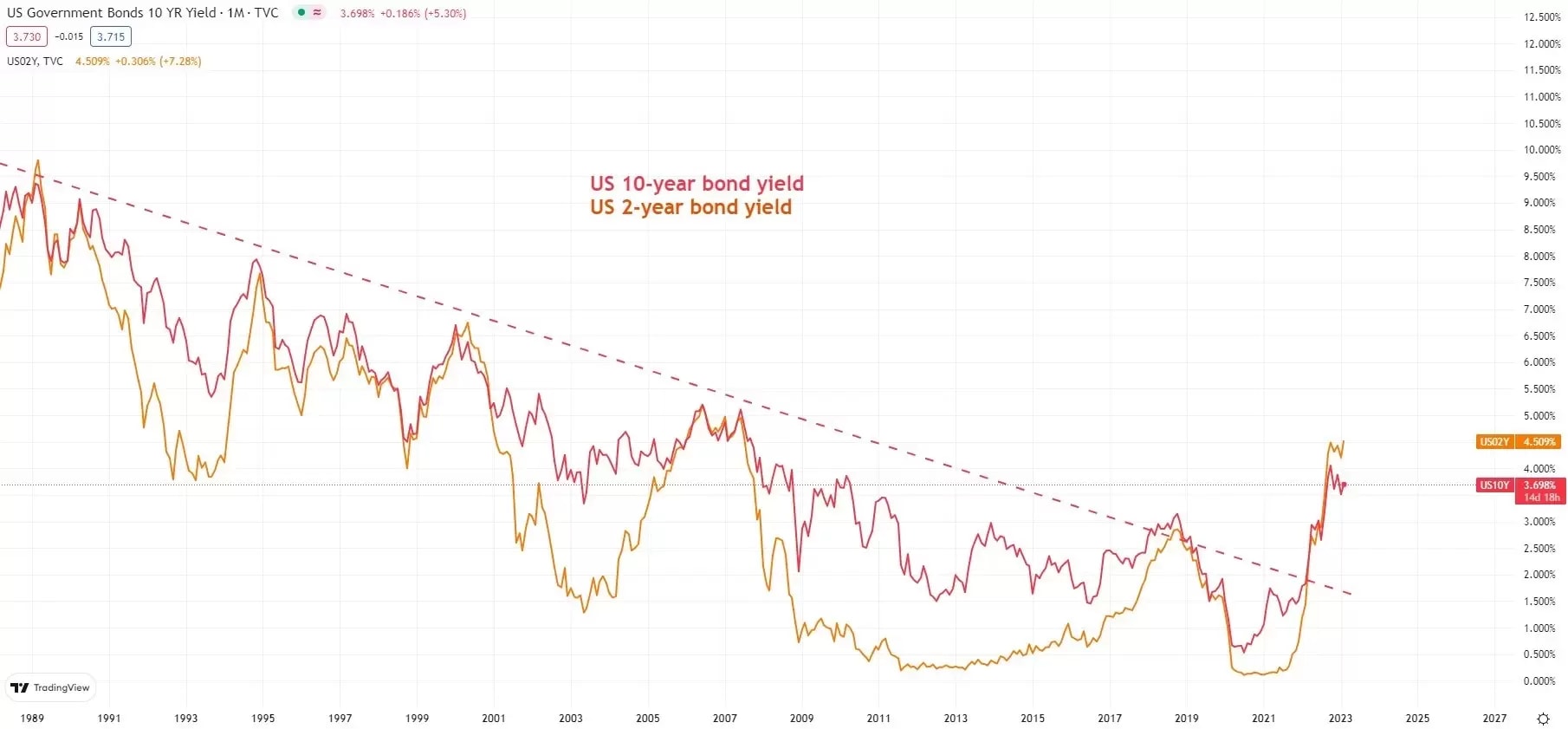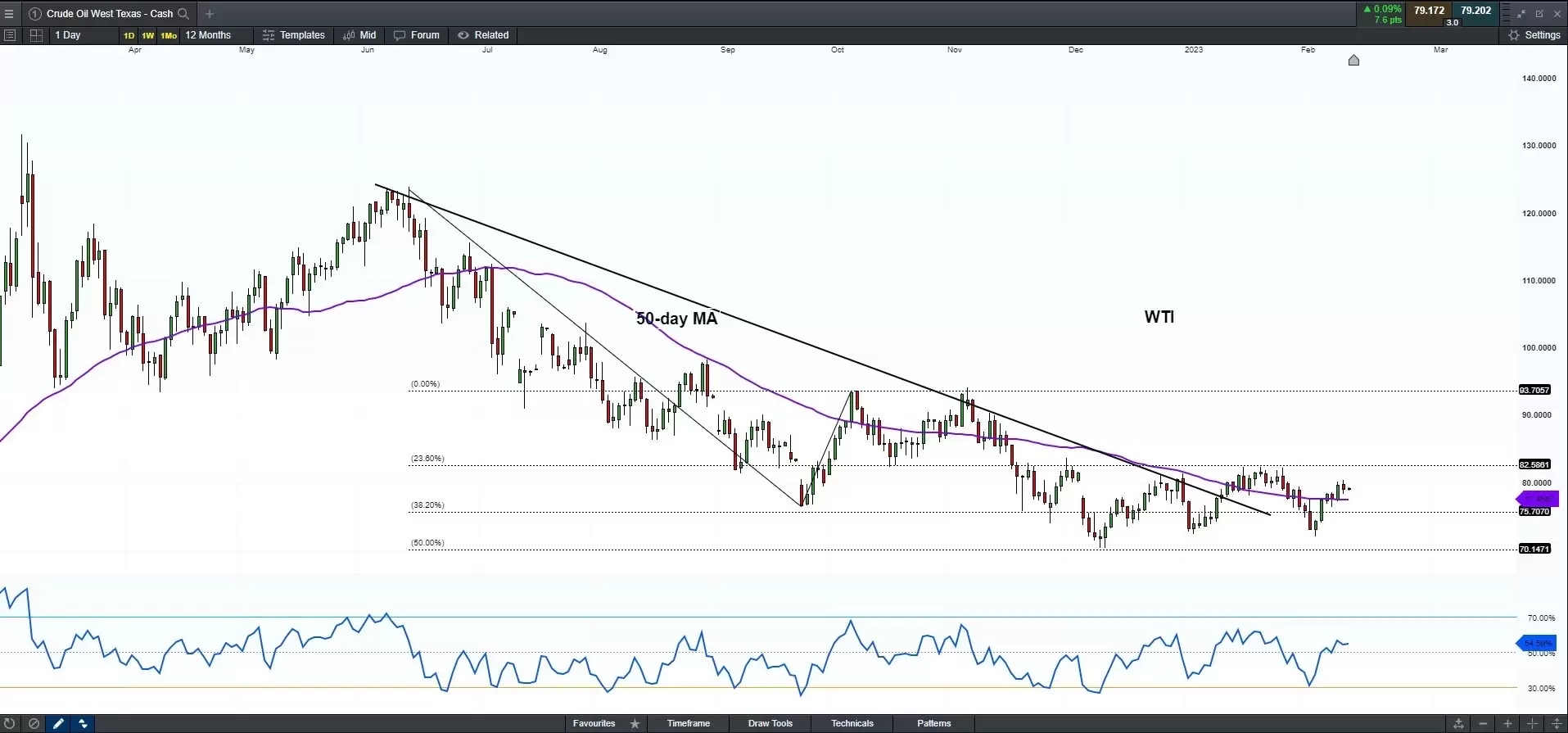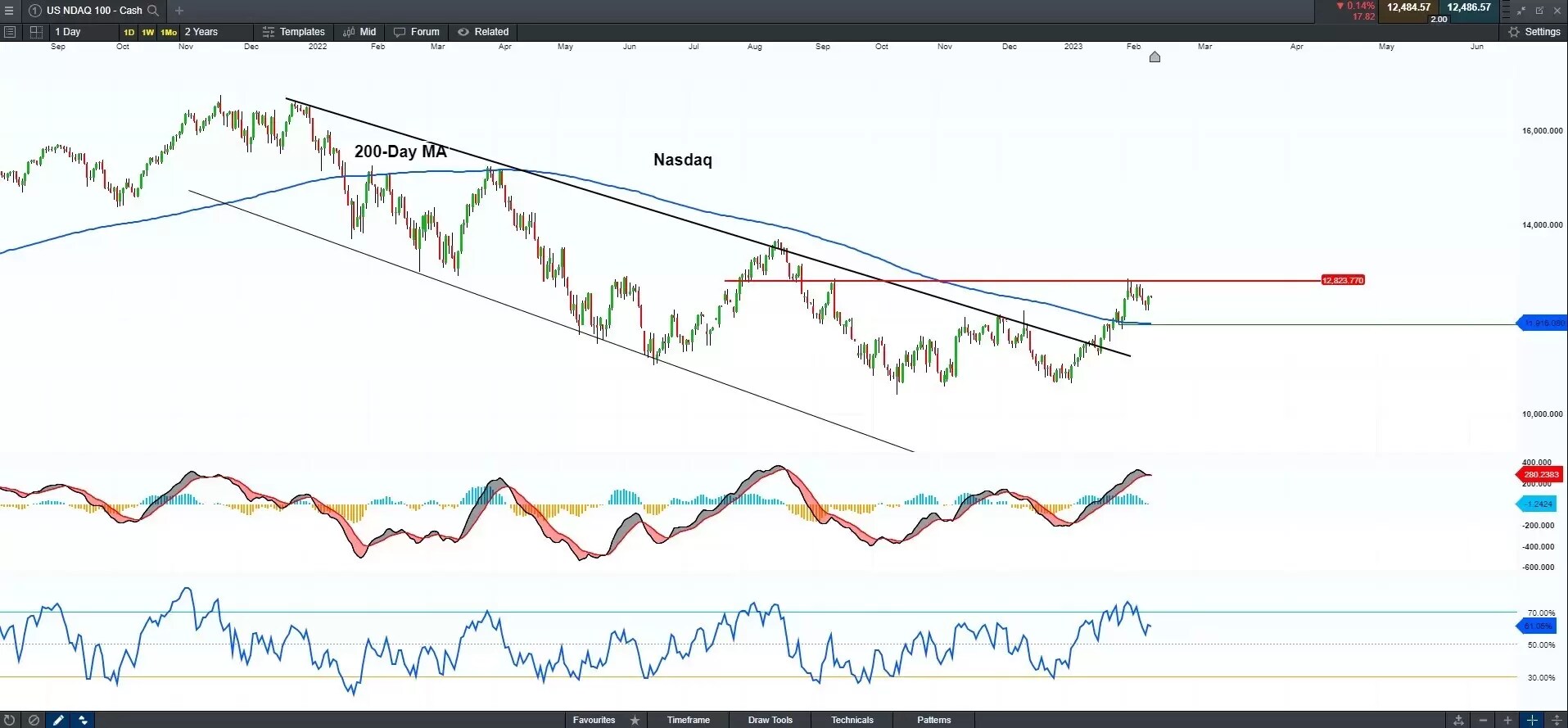
Despite a rally on Wall Street in the last session, the upcoming US consumer price index (CPI) data may not give a hand to market bulls, as the upcoming data might not be as optimistic as projected.
The US inflation trajectory is still facing uncertainties amid recent strong labour markets, and a pickup in energy prices recently, which may put stocks' rally on pause should the CPI data come in higher-than-estimated. And signs in the markets indicate that the rebound in equities could face a bump on the road ahead.
Spikes in the US bond yields
The US benchmark bond yields spiked after the US January job data as markets are now pricing in a slower exit of the Fed’s rate hike cycle after May at the earliest. The previous project was a rate hike pause after March and held throughout the year. The tight employment data helped improve the US economic outlook and pushed the bond yields and the US dollar. The US 10-year bond yield jumped from 3.4% to 3.7% in the last two weeks, and the US 2-year bond yield rose from 4.2% to 4.5% during the same timeframe. Today’s CPI could enhance this trend if the data provide an upside surprise. The consensus calls for a 6.2% increase in January year on year, a further down from 6.5% in December.

Oil prices and energy stocks rebuild strength
Crude prices rebounded since the Fed’s policy meeting on 2 February, when the Reserve bank raised interest rates by 25 basis points and hinted that a rate-hike pause could be after March. However, the strong US non-farm payrolls data was a slap in its face and made the Fed officials turn around to ”higher for longer” rates guidance.
The inflation positively correlated commodities, and oil markets regained strength by climbing 9% in two weeks. The rebound in the oil markets suggests that the inflation trajectory maybe not be as ideal as said.

Following crude oil’s comeback, the energy sector gained momentum again in the S&P 500 in the past week, with the Energy Select Sector SPDR ETF (XLE) up 4.6%. In contrast, the typical growth sector, Telecommunication Services (XLC) down 3% in the last five days, suggesting the sector rotation has changed course amid the Fed’s tweaks.

A potential pullback in Nasdaq
The above narrative may support a pullback in the tech-heavy index, Nasdaq due to re-rampant US bond yields and weakened sentiment in growth stocks.

The index faced near-term resistance of 12,800, the high on 2 February, potentially further pulling back towards the 200-day moving average support of 11,900. Both MACD and RSI are in overbought territory, suggesting an upside momentum exhaustion.
Disclaimer: CMC Markets is an execution-only service provider. The material (whether or not it states any opinions) is for general information purposes only, and does not take into account your personal circumstances or objectives. Nothing in this material is (or should be considered to be) financial, investment or other advice on which reliance should be placed. No opinion given in the material constitutes a recommendation by CMC Markets or the author that any particular investment, security, transaction or investment strategy is suitable for any specific person. The material has not been prepared in accordance with legal requirements designed to promote the independence of investment research. Although we are not specifically prevented from dealing before providing this material, we do not seek to take advantage of the material prior to its dissemination.























